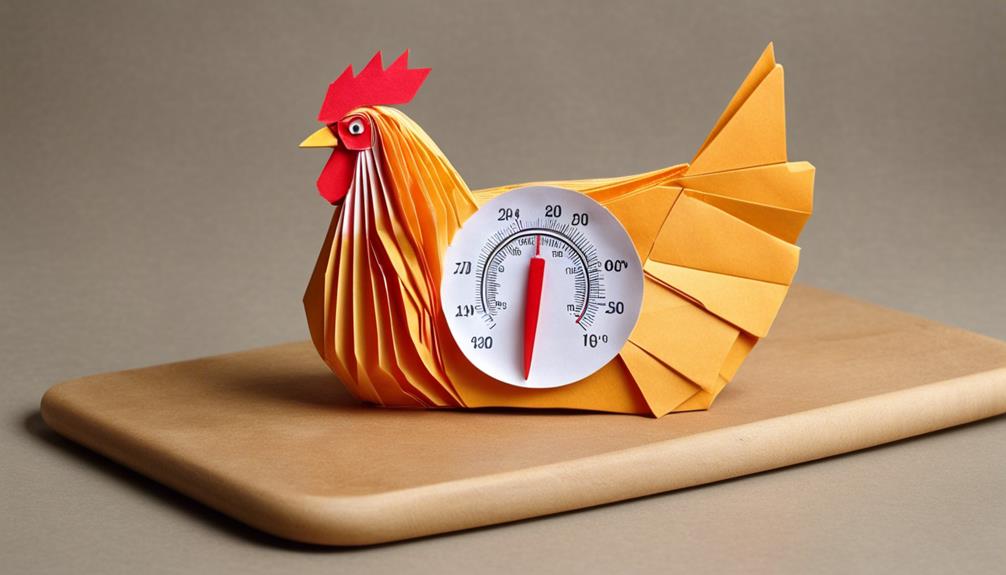When preparing meals in your kitchen, remember the paramount importance of practicing proper food safety to prevent potential pitfalls. From handwashing to cleaning and sanitizing, these five basic rules can shield you and your loved ones from foodborne illnesses. But what happens when you don’t adhere to these guidelines?
1. Handwashing

Proper handwashing is essential for maintaining food safety in your kitchen. The proper technique involves wetting your hands with clean, running water (warm or cold), then lathering with soap. Be sure to scrub all surfaces of your hands, including the backs, wrists, between fingers, and under nails, for at least 20 seconds. Rinse your hands well under running water and dry them using a clean towel or air dryer.
Common mistakes people make when washing their hands include not washing for a long enough duration. Twenty seconds can feel like a long time, but it’s crucial for eliminating germs effectively. Another mistake is not scrubbing all areas of the hands thoroughly. Ensure you cover all surfaces to prevent any potential contamination. Using water alone without soap is also a common error. Soap is necessary for breaking down oils and dirt that harbor bacteria.
2. Cross-contamination
To ensure food safety in your kitchen, it is crucial to understand and prevent cross-contamination, which can occur when harmful bacteria spread from one surface to another. Cross-contamination is a significant concern when handling raw meat, poultry, seafood, and eggs. Implementing proper kitchen organization and food prep techniques can help minimize the risk of cross-contamination in your cooking area.
Tips to Prevent Cross-Contamination:
| Tip | Description | Example |
|---|---|---|
| 1. Color-coded Cutting Boards | Assign specific cutting boards for different food types to avoid mixing bacteria. | Red board for raw meat. |
| 2. Separate Storage | Store raw meats on the bottom shelf of the refrigerator to prevent drips onto other foods. | Keep them in a sealed container. |
| 3. Proper Handwashing | Wash hands after handling raw foods to avoid spreading bacteria to other surfaces. | Use warm water and soap. |
| 4. Clean as You Go | Regularly sanitize countertops and utensils during food prep to maintain a clean workspace. | Use a mixture of water and vinegar. |
| 5. Cook Thoroughly | Ensure all foods, especially meats, are cooked to their recommended internal temperatures. | Invest in a food thermometer. |
3. Proper Cooking Temperatures

When cooking various types of foods, it is essential to pay close attention to the recommended internal temperatures to ensure they are safe for consumption. Temperature control is crucial in preventing foodborne illnesses. For meats, in particular, ensuring they reach the appropriate internal temperature is vital for meat safety.
Ground meats like beef, pork, lamb, and veal should be cooked to an internal temperature of 160°F (71°C). Poultry, including chicken and turkey, must reach 165°F (74°C) to be safe for consumption. Whole cuts of beef, pork, veal, and lamb should be cooked to at least 145°F (63°C), allowing them to rest for three minutes before carving or consuming. Fish should be cooked to an internal temperature of 145°F (63°C) as well. It is crucial to invest in a reliable food thermometer to accurately gauge the internal temperature of cooked foods.
4. Food Storage
Maintaining proper food storage practices is essential to extend the shelf life of your ingredients and prevent food spoilage. When it comes to fridge organization, make sure to store raw meats on the bottom shelf to prevent any drips onto other foods. Utilize clear containers for leftovers, labeling them with the date to ensure they are used promptly. Proper pantry rotation is crucial; remember to place newer items at the back and older ones at the front to avoid items expiring unnoticed.
Always check expiration dates before using any ingredients, especially dairy products and packaged foods. Utilize meal prep to your advantage by portioning out meals into airtight containers, making sure to cool them adequately before refrigerating. This not only saves time during busy weekdays but also ensures that food is stored safely.
To maintain the freshness of fruits and vegetables, store them in separate drawers in the fridge, as they have different temperature and humidity requirements. Consider investing in a fridge thermometer to guarantee that your food is stored at the optimal temperature. By following these food storage tips diligently, you not only prevent food wastage but also promote a healthier and more organized kitchen environment.
5. Cleaning and Sanitizing

Ensuring thorough cleaning and proper sanitization of kitchen surfaces is crucial to prevent contamination and maintain a safe cooking environment. When it comes to kitchen hygiene and safe food handling, following these steps will help you keep your cooking space clean and safe:
- Wash with Hot, Soapy Water: Start by washing your kitchen surfaces, cutting boards, utensils, and countertops with hot, soapy water after each use. This helps remove any dirt, bacteria, or food residue that could contaminate your next meal.
- Sanitize Regularly: After washing, it’s important to sanitize surfaces to kill any remaining bacteria. You can use a solution of bleach and water or a commercial sanitizer to ensure proper sanitation. Pay extra attention to areas that come into contact with raw meat, poultry, or seafood.
- Change Dishcloths and Towels Often: Dishcloths and towels can harbor harmful bacteria if not changed regularly. To prevent cross-contamination, replace them with clean ones daily or more frequently if they become visibly dirty.
Frequently Asked Questions
What Are Some Common Misconceptions About Food Safety That Home Cooks Should Be Aware Of?
Misconceptions about food safety can lead to risky habits. Be cautious with temperature control to prevent foodborne illnesses. Cross contamination can happen easily. Master cleaning methods and proper storage techniques to keep your kitchen safe.
How Can Home Cooks Effectively Prevent Foodborne Illnesses When Cooking for Large Groups or Events?
When cooking for events or large groups, prioritize food safety. Separate raw meats from ready-to-eat foods to prevent cross-contamination. Wash hands frequently, sanitize surfaces, and ensure proper cooking temperatures. Keep hot foods hot and cold foods cold to avoid foodborne illnesses.
Are There Any Specific Foods That Are More Prone to Causing Foodborne Illnesses and Should Be Handled With Extra Caution?
When handling foods prone to causing foodborne illnesses, like poultry, seafood, and eggs, be extra cautious. Ensure proper food storage, prevent cross-contamination, and always practice safe handling and cooking temperatures to keep your meals safe to eat.
How Often Should Kitchen Towels and Sponges Be Replaced to Prevent Bacterial Growth?
You should replace kitchen towels every few days and sponges every 1-2 weeks to prevent bacterial growth. Regular replacement maintains kitchen hygiene and reduces the risk of contamination from these items, promoting a safer cooking environment.
What Are the Best Practices for Safely Thawing Frozen Foods to Prevent Bacteria Growth?
When safely thawing frozen foods, remember to use proper freezing techniques and follow thawing guidelines to prevent contamination. This ensures that bacteria growth is minimized, keeping your food safe for consumption.



